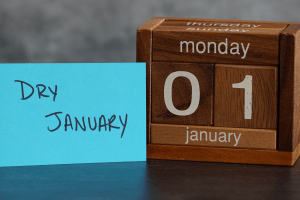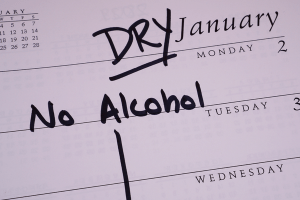
National Institute on Alcohol Abuse and Alcoholism (NIAAA)
BRAIN at 10: A View from the National Institute on Alcohol Abuse and Alcoholism
This piece originally appeared on April 23, 2024, on NIH’s The BRAIN Blog. In recognition of The BRAIN Initiative’s 10-year milestone of advancing neuroscience and neurotechnology research, Dr. Koob discussed NIAAA’s participation in the NIH BRAIN Initiative over the years and the impactful science advances that the initiative helped generate.
The BRAIN Initiative is marking a milestone—10 years of advancing neuroscience and neurotechnology research by funding innovative projects. As part of a rotating series of blog posts, the Directors of the BRAIN Initiative-partnering Institutes and Centers share their voice and perspectives on the impact BRAIN has made on their respective missions—and vice versa.
By George F. Koob, PhD, Director, NIAAA
The National Institute on Alcohol Abuse and Alcoholism (NIAAA) is the largest funder of alcohol research in the world. Our mission is to generate and disseminate fundamental knowledge about the adverse effects of alcohol on health and well-being, and to apply that knowledge to improve diagnosis, prevention, and treatment of alcohol-related problems, including alcohol use disorder, across the lifespan.
For more than 50 years, NIAAA has been at the forefront of cutting-edge alcohol research, and we support and conduct a broad spectrum of basic, translational, and clinical research to address the impact of alcohol misuse on the brain, body, and behavior. To this end, our mission aligns with that of the Brain Research Through Advancing Innovative Neurotechnology® Initiative, or The BRAIN Initiative®, to revolutionize our understanding of the human brain by accelerating the development and application of innovative neurotechnologies and approaches.
Q. How has NIAAA participated in the BRAIN Initiative?
NIAAA has participated in the BRAIN Initiative since its inception 10 years ago. Our staff contributes to all areas of BRAIN Research, including actively working within nine National Institutes of Health (NIH) BRAIN Initiative teams. NIAAA staff members work collaboratively with other NIH BRAIN Initiative Institute and Center staff on funding recommendations, developing initiatives, and organizing workshops and BRAIN meetings. In particular, NIAAA staff members play an active role in the BRAIN Initiative Cell Atlas Network (BICAN), the Brain Behavior Quantification and Synchronization (BBQS) Program, the Team-Research BRAIN Circuit Programs (U19), and special task force groups.
Dr. James Eberwine of the University of Pennsylvania represents NIAAA on the BRAIN Initiative. Dr. Eberwine and NIAAA staff share exciting BRAIN Initiative advances and alcohol investigators’ awards with NIAAA staff and advisory council. As the NIAAA director, I frequently meet with Dr. John Ngai and other NIH BRAIN Initiative Institute and Center leadership to discuss advances and provide recommendations on BRAIN Initiative-specific issues.
Q. Why is it important for NIAAA to be a part of the NIH BRAIN Initiative?
From the beginning, NIAAA has been interested in the role of neuron and non-neuronal cell interactions in brain function and behavior, and we engaged in early discussions with the BRAIN Initiative on this topic. It is exciting to see that BRAIN Initiative advances in this space have enhanced tools to understand these roles better. In addition, a vast array of transcriptionally identifiable neurons and non-neuronal cells revealed by BICAN and the BRAIN Initiative Cell Census Network (BICCN) provide a molecular and anatomical framework for precisely mapping these cell types in several species. These advances made by the BRAIN Initiative inform the better understanding of neuron and non-neuronal cell interactions in health and disease, including how alcohol misuse affects the brain.
One of the BRAIN Initiative’s key values is supporting large-scale multidisciplinary, multimodal research that generates technologies and resources benefiting NIH BRAIN Initiative Institutes and Centers broadly. To this end, BRAIN programs that aim to understand circuit function related to behavior—such as BBQS, U19, and the BRAIN Initiative Connectivity Across Scales (BRAIN CONNECTS) program—synergize with our interest in using multimodal and multidisciplinary approaches to understand dynamic circuit activities that give rise to behaviors associated with alcohol misuse and alcohol use disorder. The marmoset research resource established by the BRAIN Initiative, in partnership with the NIH Blueprint for Neuroscience Research, has created an opportunity for the strategic and coordinated use of marmosets as a promising model system. Further, NIAAA staff actively participate in assessing and managing neuroethical implications of BRAIN advances, such as translational applications of neuromodulation technologies and data privacy. NIAAA also co-leads the important team effort to enhance training for the next generation of a diverse community of BRAIN investigators who will have broad expertise and perspectives in the neuroscience research and brain diseases.
Q. How has the BRAIN Initiative affected what we know about alcohol misuse and the brain?
NIAAA’s participation in the BRAIN Initiative has provided notable mutual benefits. Alcohol researchers contributed to enhancing and developing innovative technologies, such as those for chemogenetic modulation, real-time imaging, and manipulating neurotransmitter and neuropeptide signaling. BRAIN Initiative investments in these and other genetically encoded biosensors, coupled with cell-type specific multiomic signatures, have been a game changer for our alcohol-related research. These advances allow in vivo manipulation of activities in specific cell types as well as in vivo detection of neurochemical and electrical signals in real time.
The BRAIN Initiative’s open science credo makes BRAIN tools and resources accessible and affordable for the broad neuroscience research community. This has made it possible to apply the above and other BRAIN technologies, such as large-scale recording and imaging, in the study of alcohol use disorder. We actively share BRAIN Initiative advances, conceptual innovations, and resources with alcohol investigators through outreach and presentations to major alcohol consortia and the National Advisory Council on Alcohol Abuse and Alcoholism, as well as to the major alcohol research society, the Research Society on Alcoholism.
Q. How has BRAIN advanced or shaped your mission?
Advances made by the BRAIN Initiative provide unprecedented opportunities for us to capitalize on technological and conceptual innovations, data, and other resources to accelerate a comprehensive understanding of the central nervous system’s role in the pathology of alcohol misuse across diverse levels of function. I envision a new, integrated level of knowledge of alcohol use disorder and novel treatment strategies that could result from the applications of cutting-edge technologies, such as brain mapping in multiple scales across species, cell-type specific access, large-scale brain recording, targeted non-invasive neuromodulation, and artificial intelligence (AI)-enabled analysis of large data sets captured across multi-modalities.
Need Help for an Alcohol Problem?
If you’re having an emergency, call 911. If you are having suicidal thoughts, call 911, go to the nearest emergency room or call the toll-free, 24-hour National Suicide Prevention Lifeline at 1-800-273-TALK (8255) to help you through this difficult time.
The NIAAA Alcohol Treatment Navigator can help you recognize and find high quality treatment for alcohol use disorder. If you drink excessively, seek medical help to plan a safe recovery as sudden abstinence can be life threatening. NIAAA’s Rethinking Drinking can help you assess your drinking habits and provides information to help you cut back or stop drinking.







